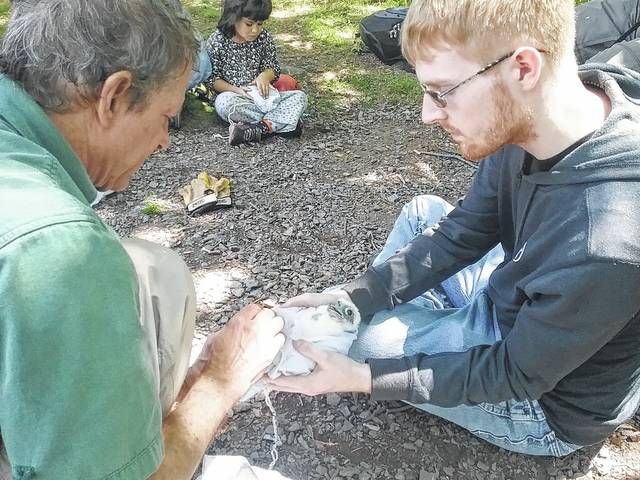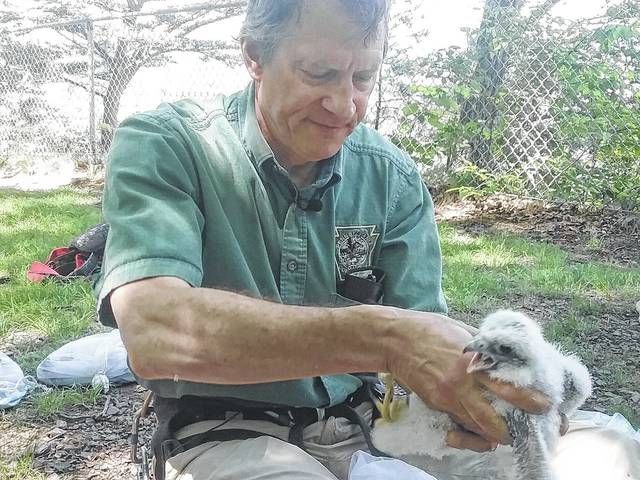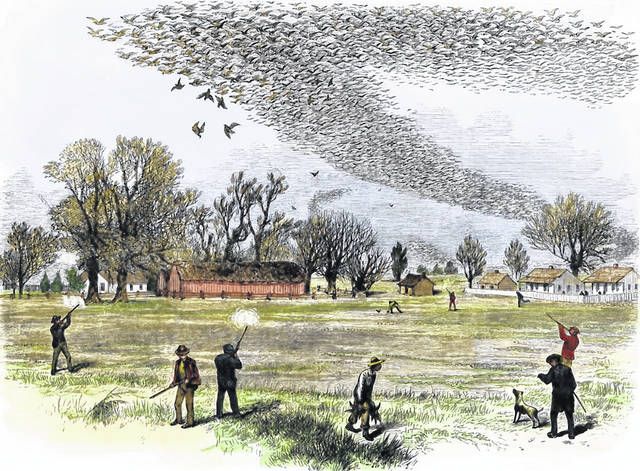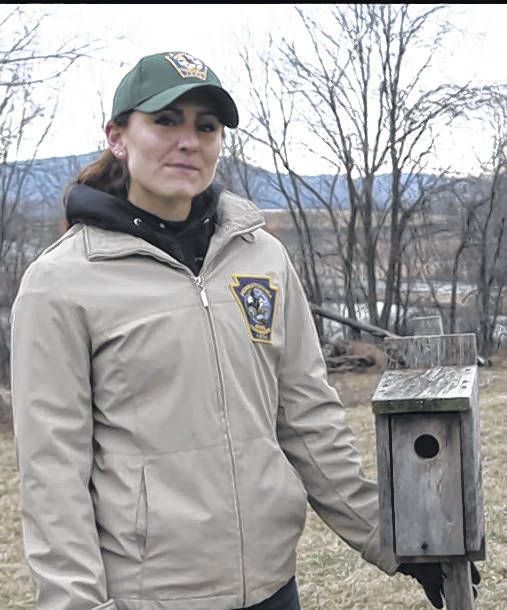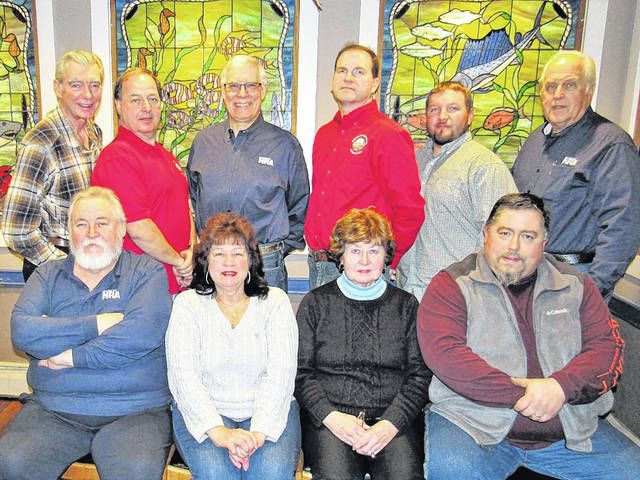Click here to subscribe today or Login.
While two adult peregrine falcons darted angrily above, Pennsylvania Game Commission biologist Mike Scafini rappelled down a cliff on Wednesday to collect what the birds were guarding.
After a few minutes, Scafini made his way up the cliff with a mesh sack full of peregrine falcon chicks — four in all — provoking a welcome response from Art McMorris, the agency’s peregrine falcon coordinator.
While a nest of four chicks may not seem like a lot, it’s pretty significant considering there are just 46 peregrine nest sites in the state and the species is listed as endangered in Pennsylvania.
While peregrine falcons have faced numerous challenges over the last few decades, this particular nest site on a cliff in Luzerne County has produced new chicks for the population at a fairly consistent pace. McMorris began banding falcon chicks at the location in 2007, and aside from two years the nest has been successful.
And when it comes to peregrine falcon nests, location is everything.
“Cliff nests are especially important because of what happens at fledgling time,” McMorris said. “When the young fledge and take their first flight, they’re not very good at it.”
If a young falcon makes a mistake on its first flight attempt from a cliff nest, chances are it will land on another ledge or nearby tree. But in other locations where peregrines nest, such as bridges or buildings, a mishap during fledgling could mean the young falcon will drown in a river or land on a street and get run over by a vehicle.
“These cliff nests are really important to the future of the population,” McMorris said.
After Scafini handed off the four chicks to McMorris, he gave each a thorough health inspection, which included checking the development of flight muscles, inspecting the inside of the beak for signs of disease and removing maggots from their ears and treating for bugs under the wings.
McMorris said the maggots and bugs aren’t life-threatening and the four chicks at the Luzerne County cliff, which were nearly three weeks old, were free from disease and other abnormalities.
“Four healthy, happy nestlings. Everything is perfect,” McMorris said.
But it’s been quite some time since everything was perfect with the peregrine falcon population in the state.
While the species was removed from the federal endangered species list in 1999, they are still at risk in most eastern states, McMorris said. Most populations east of the Rockies were wiped out in the 1940s and 50s by the use of the insecticide DDT. In Pennsylvania, the peregrine falcon was eradicated as a nesting bird in 1961. Since then, the Game Commission and other organizations have worked to restore the species, beginning with breeding falcons in captivity and releasing the young into the wild.
“The falcons at this cliff, for example, are the great, great, great descendents of those birds,” McMorris said.
Today, thanks in part to the success at cliff nests, the species is coming back to the point where it is getting close to being upgraded from endangered to threatened, McMorris said.
Still, McMorris and other PGC biologists and volunteers remain vigilant in monitoring nests and banding the young.
During Wednesday’s visit, in addition to the health check and recording weight and sex (one male and three females), a photographer took pictures of the adults in flight which will be used later to identify the numbers on their legbands. The numbers will be used to determine the age of the adults and where they came from.
McMorris also placed two legbands on the chicks so they could be tracked in the future.
After the process was completed, the four chicks were placed back in a bag and Scafini rappelled back down the cliff to deposit them in the nest 50 feet below. McMorris said there isn’t a problem with the chicks being accepted by the adults after they were handled.
“These birds are so bound to their young they’ll never reject them,” he said.
As for the other 45 nest sites around the state, McMorris would like to check them all but funding issues make it impossible.
“Last year I did 25 sites, and if funding wasn’t a problem I’d like to do them all,” he said. “But these cliff nests are our top priority. Each cliff nest makes four times the contribution to the population producing young.”
For other sports stories, click here.
